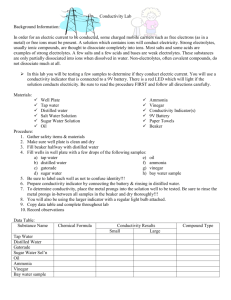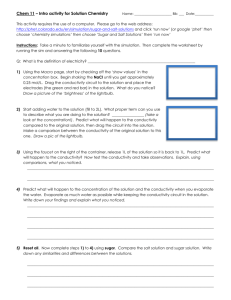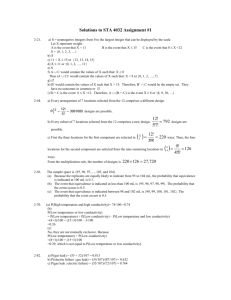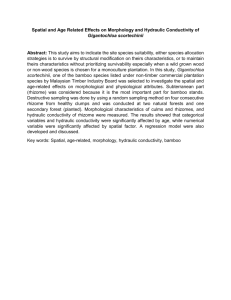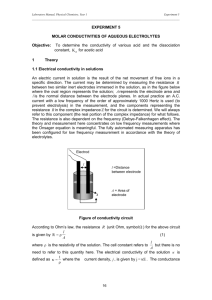Background
advertisement
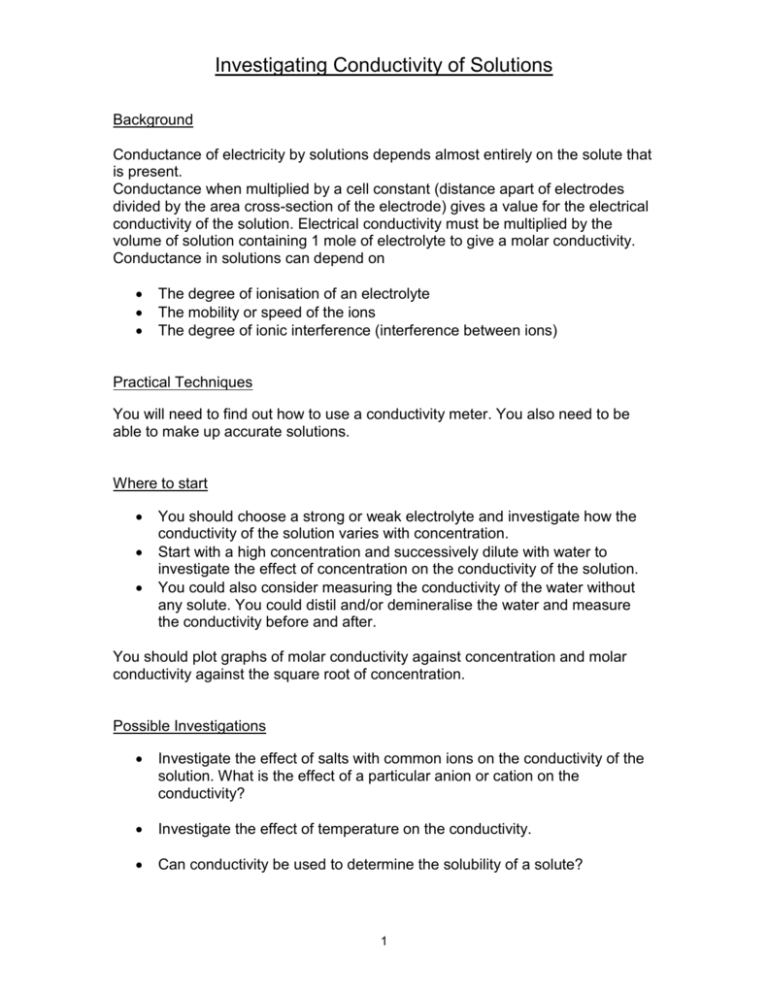
Investigating Conductivity of Solutions Background Conductance of electricity by solutions depends almost entirely on the solute that is present. Conductance when multiplied by a cell constant (distance apart of electrodes divided by the area cross-section of the electrode) gives a value for the electrical conductivity of the solution. Electrical conductivity must be multiplied by the volume of solution containing 1 mole of electrolyte to give a molar conductivity. Conductance in solutions can depend on The degree of ionisation of an electrolyte The mobility or speed of the ions The degree of ionic interference (interference between ions) Practical Techniques You will need to find out how to use a conductivity meter. You also need to be able to make up accurate solutions. Where to start You should choose a strong or weak electrolyte and investigate how the conductivity of the solution varies with concentration. Start with a high concentration and successively dilute with water to investigate the effect of concentration on the conductivity of the solution. You could also consider measuring the conductivity of the water without any solute. You could distil and/or demineralise the water and measure the conductivity before and after. You should plot graphs of molar conductivity against concentration and molar conductivity against the square root of concentration. Possible Investigations Investigate the effect of salts with common ions on the conductivity of the solution. What is the effect of a particular anion or cation on the conductivity? Investigate the effect of temperature on the conductivity. Can conductivity be used to determine the solubility of a solute? 1 Investigate the changes in conductivity during a chemical reaction – e.g. neutralisation reactions Sources of information Liptrott G.F., Thompson J.J., Walker G.R., (1982), Modern Physical Chemistry, Bell and Hyman, London Thorpe A, Assessing the risks in practical work, Chemistry Review, September 2000 Thorpe A, Experimental error and error analysis: just how good are those results, Chemistry Review, November 2001 Thorpe A, Making a standard solution, Chemistry Review, November 2002 2 Teachers Notes General This investigation does not require a high level of manipulative skills. Students can extend their manipulation skills by carrying out a titration if they choose to investigate neutralisation reactions. The analysis will require a reasonable grasp of mathematical skills. Strong electrolytes that could be used are hydrochloric acid, sulphuric acid, sodium hydroxide, potassium chloride and sodium chloride. Weak electrolytes that could be used are ammonia solution or ethanoic acid. Once the solutions have been prepared each measurement should take a few seconds. Chemical Principles Conductance of electrolytes, ionic solutions, quantitative chemistry, Essential Equipment Conductivity meter Essential Chemicals Acids, alkalis, salts Safety No risk assessment has been given. It is essential that students prepare a detailed risk assessment before they start. Teachers should check all plans and must be satisfied that this is suitable for the proposed investigation. 3




